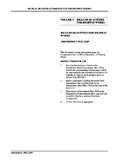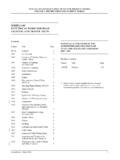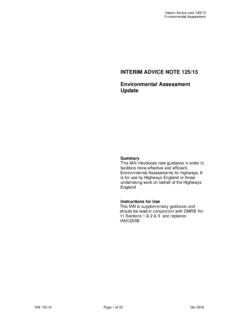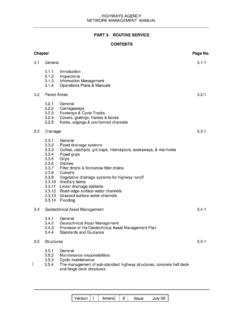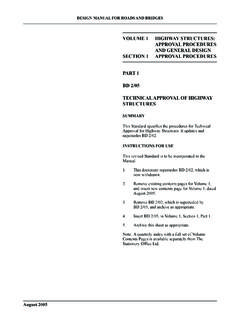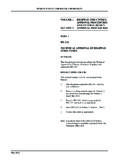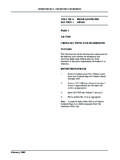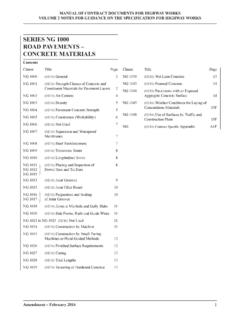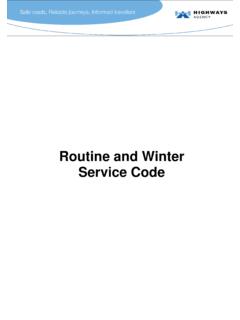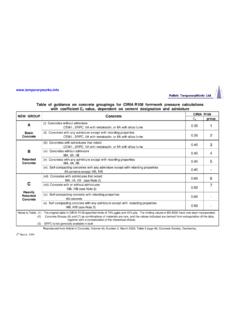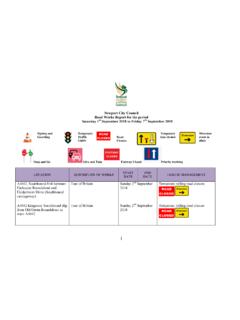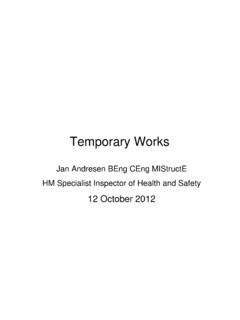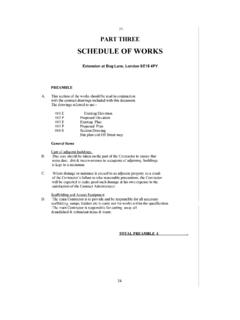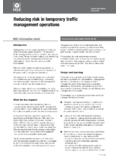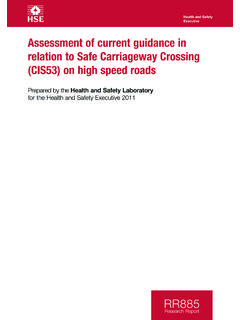Transcription of TRAFFIC SIGNS MANUAL CHAPTER 8 TRAFFIC SAFETY …
1 TRAFFIC SIGNS MANUAL . CHAPTER 8 TRAFFIC SAFETY . MEASURES AND SIGNS FOR ROAD. WORKS AND temporary . SITUATIONS. volume 8 TRAFFIC SIGNS AND. LIGHTING: SECTION 4 TRAFFIC MANAGEMENT. AT ROADWORKS. INTERIM ADVICE NOTE IAN 57/04. REVISION 1. THE USE OF temporary SPEED. LIMITS AT ROAD WORKS ON HIGH. SPEED ROADS. SUMMARY. This Interim Advice Note provides revised guidance to TRAFFIC management designers relating to the application of temporary speed limits at road works on high speed roads. INSTRUCTIONS FOR USE. This IAN supersedes the relevant guidance on the use of temporary speed limits at road works on high speed roads provided in the TRAFFIC SIGNS MANUAL CHAPTER 8 1991 and in TA 64/94 of the Design MANUAL for Roads and Bridges. 1 Aug 2004. IAN Contents INTERIM ADVICE NOTE 57/04 (IAN 57/04).
2 Revision 1. THE USE OF temporary SPEED LIMITS. AT ROAD WORKS ON HIGH SPEED ROADS. 1. INTRODUCTION. Background The prime objective of the temporary TRAFFIC management designer should be to produce temporary TRAFFIC management arrangements, which facilitate the movement of TRAFFIC past the works whilst maintaining the same standards of SAFETY as in the permanent situation . For each element of the preliminary temporary TRAFFIC management design, the designer should seek to identify any geometric or SAFETY feature, which fails to achieve the same standard as the permanent highway. The designer should impose additional measures to ameliorate these shortcomings. In general terms such measures should directly address the SAFETY deficiency identified. There are circumstances in which it is inappropriate or impracticable to directly address SAFETY deficiencies in the preliminary design of the temporary TRAFFIC management arrangement.
3 In such cases the imposition of a temporary speed limit can be used to indirectly reduce SAFETY deficiencies. This approach protects both the road user and workforce by maintaining the overall SAFETY standards of the highway, and thereby promoting safe and controlled TRAFFIC flow past the works. Whilst it is appropriate to use temporary speed limits to ameliorate SAFETY deficiencies in the temporary highway infrastructure, it is not appropriate to impose reduced temporary speed limits to compensate for risks to the workforce arising from inappropriate working methods. These should be addressed by greater use of equipment/machines, the provision of barriers, and alternative operational techniques. Only where there are space limitations adjacent to the works area, which prevent implementation of adequate works site protection within the SAFETY zone, should a reduced speed limit be considered.
4 Scope This Interim Advice Note provides revised guidance relating to the application of temporary speed limits at road works on high speed roads, and supersedes the relevant guidance provided in the TRAFFIC SIGNS MANUAL - CHAPTER 8 1991 and in TA 64 of the Design MANUAL for Roads and Bridges. The principles and provisions set out in this document are applicable to all high speed trunk roads in England which are subject to a permanent mandatory speed limit of 50 mph or greater. 2 Aug 2004. IAN Contents The application of temporary mandatory speed limits should be considered for all planned works on high speed roads. To help ensure compliance the designer should involve enforcement agencies early in the design of a road works scheme to ensure agreement on enforcement issues and the placement of cameras and SIGNS .
5 The design programme for such works should make provision for the time necessary to obtain the appropriate temporary TRAFFIC regulation orders. Where there is insufficient time to obtain temporary TRAFFIC regulation orders under normal procurement procedures consideration should be given to obtaining a TRAFFIC order under emergency notice procedures (Section 14(2) of the Road TRAFFIC Regulation Act 1984), or in collaboration with the Police under their powers. Where it is impracticable to obtain a mandatory speed limit consideration should be given to the application of an advisory speed limit. The method for assessing appropriate speed limits is the same for advisory and mandatory speed limits. Implementation The provisions contained within this document should be implemented in the design of all future temporary TRAFFIC management arrangements for new works contracts.
6 2 REDUCTION OF SPEED LIMITS. Implementation of the following measures is intended to produce a temporary TRAFFIC management arrangement which will exhibit an accident rate similar to the permanent situation . Assessment of Speed Limit Reductions The designer should identify any geometric and SAFETY feature of the preliminary TRAFFIC management design, which fail to achieve the standards of the permanent highway. The designer should include additional measures to directly ameliorate these shortcomings. For example, in contra-flow working, the provision of a temporary barrier between opposing TRAFFIC flows can reduce the risk associated with the loss of the central reserve and permanent SAFETY barrier. When direct measures to ameliorate identified risks are inappropriate or impractical, the imposition of a temporary speed reduction should be considered.
7 Table 1 shows recommendations for the appropriate speed reduction to limit the risks associated with specific TRAFFIC management features. Usually temporary TRAFFIC management features are not concurrent, but in such situations the designer would need to weigh the assessed risks to determine whether it was appropriate that a greater speed reduction should be applied. Refer to section 4 for temporary speed reductions associated with relaxations from CHAPTER 8 standard requirements 3 Aug 2004. IAN Contents Table 1: SPEED LIMIT REDUCTION TABLE. Recommended Speed temporary TRAFFIC Management Feature Reduction Restricted Visibility(i) - restricted driver forward 20 mph visibility Loss of Hard Shoulder - used as running lane 20 mph - closure of HS refuge Zero Loss of Vehicle Restraint Barrier(ii).
8 - without protection 20 mph - with protection Zero Lane Restrictions(iii)&(iv) giving rise to enforced lane Changing - other than light flow TRAFFIC 20 mph - light TRAFFIC flow Zero Lane Merge(iv) - other than light TRAFFIC flow 20 mph - light TRAFFIC flow Zero Narrow Lane Width(v) - HGV lanes less than m and 20 mph other TRAFFIC lanes subject to width restrictions less than m Crossovers - determined by design speed See TD 92(11/04). Notes: i) For example where a works structure or road works feature is likely to obstruct a drivers forward visibility and the sight line distance is likely to be reduced below the desirable minimum. ii) Where a vehicle restraint barrier is removed as part of the temporary works from the central reserve and a temporary barrier, or block vehicle equivalent, is not installed, or is installed but does not provide equivalent vehicle restraint, it should be classed as without protection.
9 Iii) Where lane restrictions apply, eg lane closure, weight, width or height restrictions. iv) Light TRAFFIC flow is where the TRAFFIC flow is not more than 1200 vehicles per hour per TRAFFIC lane left open where the HGV content is less than 10%, or 1000 vehicles per hour per TRAFFIC lane left open where the HGV content is between 10% and 30%, or 900 vehicles per hour per lane left open where the HGV content is greater than 30%. v) Lanes of less than metres width that are required to carry heavy goods vehicles, including public service vehicles, or lanes less than metres width which are subject to vehicle width restrictions, are to be considered as narrow lanes. 4 Nov 2004. IAN Contents The greatest required speed reduction applicable from Table 1 should be used throughout the site.
10 An exception to this is where the crossover speed limit is lower than at other areas. Speed reduction should be considered on a case-by-case basis and should involve a site-specific risk assessment. Generally for motorway and dual carriageway roads normally subjected to the national speed limit a temporary maximum speed limit should not be less than 40 mph and for other high speed roads not less than 30 mph. temporary speed limits should not be imposed at road works sites for the direct purpose of protecting the workforce. Direct risks to the SAFETY of the workforce should be countered by the presence of vehicle restraint barriers or changes in working methods that eliminate the risks. The presence of vulnerable work operations on foot should be minimised. If imposed the temporary speed limit should be at least 10mph below the permanent speed limit.
